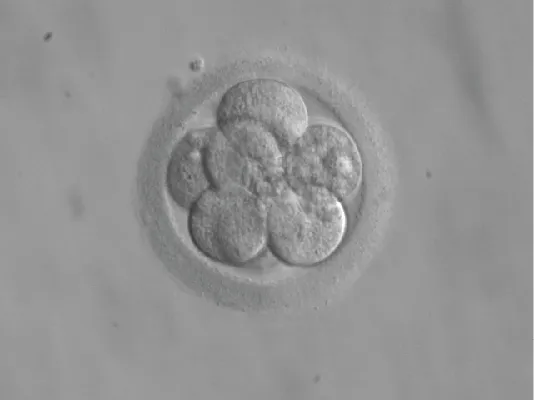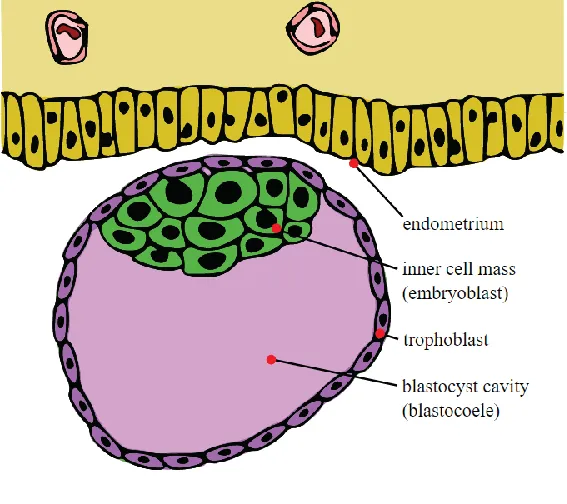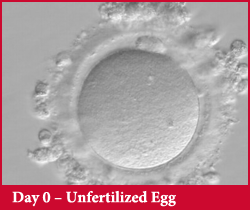This will be a short-ish post focused on research published in the journal Science on March 2, 2017 titled "Assembly of embryonic and extra-embryonic stem cells to mimic embryogenesis in vitro.". This article is not open access, and not available for reproduction under creative commons liscenses. So I will do my best to briefly describe the work done in the article, however I can not provide you the normal level of detail to which you are likely used to from my posts as I can not reproduce their figures and explain them to you.

Creating An Artificial Embryo
In this article scientists report on their experimentation into the use of stem cells, to re-create an embryo like cell. When I say embryo like, i mean it was not EXACTLY the same as an actual embryo, and should not be confused with one.
Actual Embryonic Development Is Super Complex
In mammals, development requires a whole bunch of different tissues (embryonic, and extra-embryonic) to develop and work together. Through the coordinated efforts of these tissues, the outer layer of the embryonic tissue (called the epiblast) gets organized and begins forming cells that become the actual organism. While other parts of the extra-embryonic tissue grow and develop into the placenta and the yolk sac (yes, in early stages of embryonc development, even we humans have a yolk sac). [4]
The placenta first implants itself on the wall of the uterus, and then the embryo itself implants leading to the formation of a cellular structure known as the blastocyst.

As the embryo grows it transitions from this blastocyst structure into an elongated shaped thing called the "egg cylinder." Which then continues to divide and develop through a variety of stages leading to the growth of the fetus ( for humans it takes about 8 weeks after fertilization of the egg and initial formation of the embryo for the fetus to officially form).

So What Were They Doing Here?
So remember how above I talked about the two types of tissues that are necessary to work together to form the fully implanted embryo? The embryonic tissue I called "epiblast" is actually what is known as an embryonic stem cell (yes THOSE embryonic stem cells). Researchers know they can grow these epiblast cells in culture forever (they will keep dividing and growing until they get implanted in a uterus)[8]
Remember the tissue I called extra-embryonic? Well those are ALSO stem cells (just not embryonic stem cells). Here in this study the non embryonic stem cells they were using were called trophoblast stem cells.
The researchers in this study were looking to determine whether or not they could use these two types of stem cells (embryonic and trophoblast) and re-create the way these two cell types organize during the formation of an embyro, in an artificial manner. AKA they wanted to try to see if they could create an "artificial embryo."
Using An Extra-Cellular Matrix based scaffold
So! The researchers used a three dimensional scaffold that the stem cells to be organized on, and a medium which allowed both types of stem cells to grow. The scaffold they used consisted of a material known as the extra-cellular matrix which is just a bunch of sugar coated proteins (and other long chain sugars) which link together and form a sort of mesh.
What they found was that under their conditions that using both embryonic and non-embryonic stem cells, they could form assemble the cells into an "embryo architecture." They called these structures Embryonc Trophoblast Stemcell Embryos (ETS-Embryos).
Could These Structures Begin To Develop Into Full Fledged Embryos?
Formation of Amniotic Cavity
The first step after an embryo implants in the uterus, is the formation of a structure called an amniotic cavity. Which they reported that, given some time, their artifial ETS-Embryos could form! So the artificial embryonic structure was progressing in a similar pattern to what a real embryo would do.
Generation of "Primordial Germ Cells"
The next major stage in embryonic development is the creation of cells called primordial germ cells. These cells form at the connecting spaces between the embryonic and extra-embryonic compartments (so in between these two classes of stem cells in the developing embryo complex). They identified this class of cells in their artificial embryo as well, forming after about 120 hours of growth time. Check, the box for the next stage in embryonic development. The artificial embryo is growing just like a normal one would.
What Did The Researchers Gain By Doing This?
A LOT more understanding of what makes an embryo go through the stages it does during early development. The researchers were able to understand the exact sequence of events that have to occur during actual embryo development, because here they were able to control how the cells came together.
Are These Artificial Embryos The Same As A Real Embryo?
No, not at all! They were showing that these artificial embryo complexes follow the same developmental patterns to actual embryos, but the number of cells that were present are totally different. They were trying to mimic what is there for the actual embryo as closely as they could but it's not exact. Additionally, these artificial embryos were created in an extra cellular matrix mesh, not a contained structure like a real embryo.
Damn, So We Can't Create Artificial Humans With This Technology?
Nope. An artificial embryo was created, but this "embryo" is not the same as a real human embryo! It couldn't grow past a certain point it lacks the necessary components to do so.
This research increased our understanding of how the very early stages of embryonic development happens, that in and of itself is quite fascinating.
Sources
- http://science.sciencemag.org/content/early/2017/03/01/science.aal1810
- https://en.wikipedia.org/wiki/Epiblast
- http://study.com/academy/lesson/yolk-sac-in-humans-function-definition-measurement.html
- https://www.ncbi.nlm.nih.gov/pubmed/26343010
- https://en.wikipedia.org/wiki/Blastocyst
- https://en.wikipedia.org/wiki/Gastrulation
- http://www.newhealthadvisor.com/when-does-an-embryo-become-a-fetus.html
- http://www.nature.com/nature/journal/v292/n5819/abs/292154a0.html
- https://en.wikipedia.org/wiki/Amniotic_sac
- https://embryology.med.unsw.edu.au/embryology/index.php/Primordial_Germ_Cell_Development
All Non Cited Images Are From Pixabay.com And Are Available Under Creative Commons Licenses
Any Gifs Are From Giphy.com and Are Also Available for Use Under Creative Commons Licences
If you like this work, please consider giving me a follow: @justtryme90. I am here to help spread scientific knowledge and break down primary publications in such a way so as to cut through the jargon and provide you the main conclusions in short and easy to read posts.
Thank you for your continued support of my work! I appreciate all those who follow me (and those who don't too, but I appreciate you much much less ;) ).
I have recently started a streemian a curation trail with the intent to shift more attention on science related postings on steemit. If you would like to join my trail (and it would be wonderful if you did), you can do so with this link:
https://streemian.com/profile/curationtrail/trailing/336
** For this trail, please add the required tag "science" to only trail science content that I vote on **
Thank you for your support!